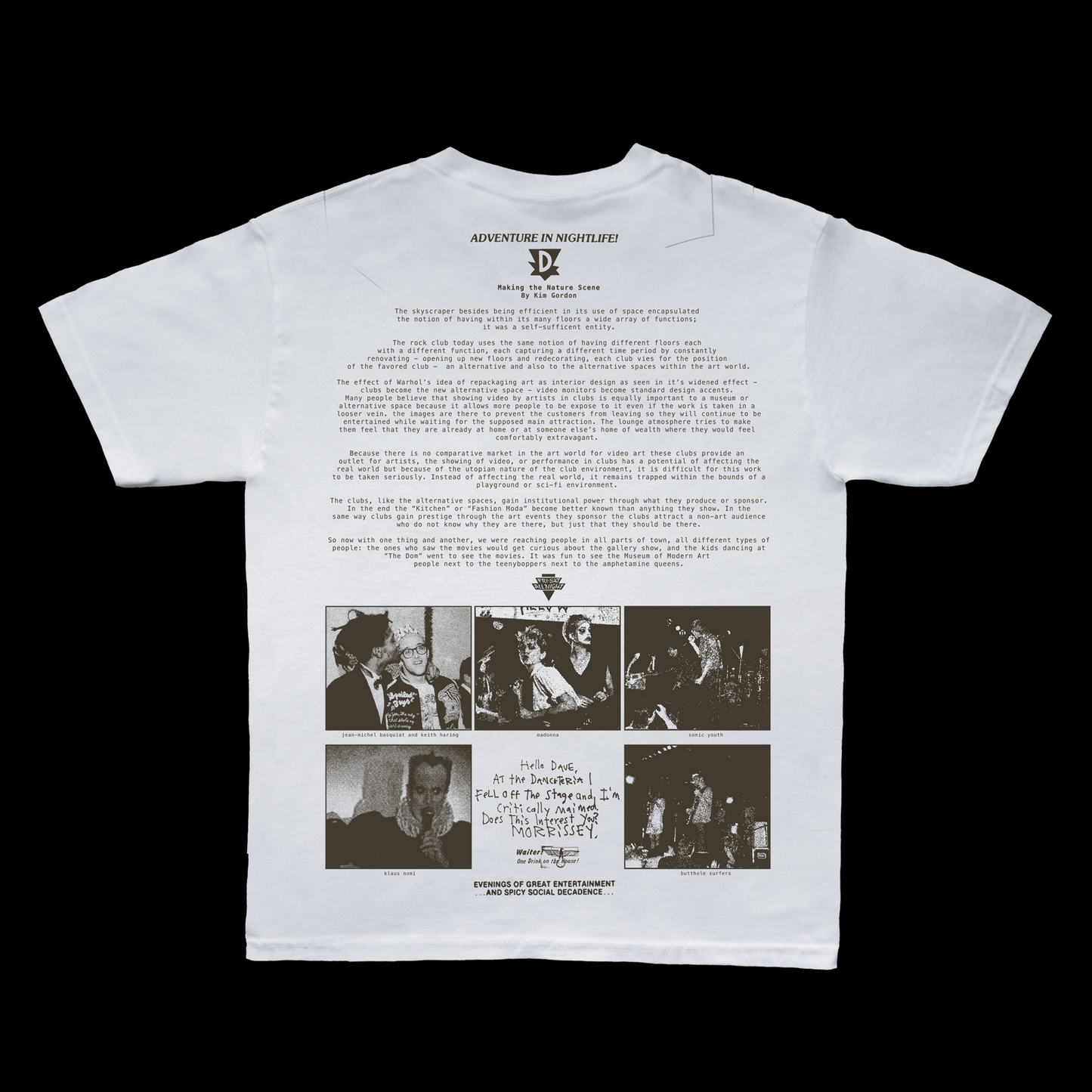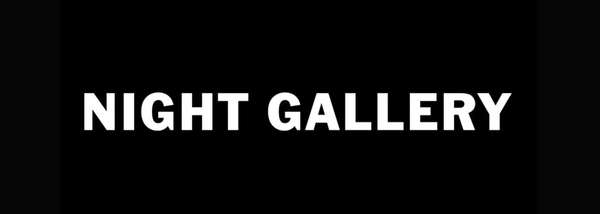Danceteria Tee (SOLD OUT)
Danceteria Tee (SOLD OUT)
Couldn't load pickup availability
ORDERS OPEN: 2/26/25
ORDERS CLOSE: 3/2/25
TO PRINT: 3/3/25
PRINTED ON WHITE LAA GD1801 TEES.
ALL ITEMS TAKE BETWEEN 3-6 WEEKS TO PRODUCE AFTER THE ORDER PERIOD ENDS. You will always receive your item unless otherwise contacted. All items are final sale. We are not responsible for lost, stolen, or misplaced packages.
In the spectrum of golden-era New York City nightlife, Danceteria was a place where one could indulge in both dancefloor hedonism and intellectual discourse. It was grittier than Studio 54, more commercial than Mudd or Hurrah, and open for business each night of the week.
The legendary New York venue had several manifestations. It first opened on 37th Street in 1979, but it was its second incarnation, at 30 West 21st, that it is remembered for. The club ran from ’82 through ’86 and boasted a wide range of talent including bands, DJs, performances, art exhibits, film screenings, video art, comedy, cabaret and fashion shows. The club was a magnet for artists who went on to achieve international fame. It ran on four floors, it ran late, and it ran hot.

Danceteria took a unique approach that allowed it to become a full-service cultural hangout. It had a main floor for dancing, where DJ/producer Mark Kamins held court. “That DJ booth became my library. I had my whole collection there—two to three thousand records,” Kamins recalls. “In those days, when you got hired by a venue, you worked every night. As a DJ, what more could you want?”
Kamins played a wide range of sounds including Afrika Bambaataa, Quango Quango, Ofra Haza, Fela and Lime. “I would play 10-hour sets,” Kamins says, “and I played everything. It was never boring, because people didn’t know what to expect next.”

The first floor featured bands and Anita Sarko DJing (she also played in the VIP room). Initially booked by Jim Fouratt, and then by Ruth Polsky, Danceteria gained a reputation as a nexus of high/low culture, and as a center for all things new wave. New Order, the Smiths (their first U.S. appearance and show), Duran Duran, Sonic Youth, Devo, Madonna (who was then dating Kamins), Sade, Klaus Nomi, The Butthole Surfers, Nick Cave, the Beastie Boys and LL Cool J (who was also an employee) played the club alongside highbrow acts like Philip Glass, Oliver Lake, Laurie Anderson, and John Lurie and the Lounge Lizards.
Long before Kim Gordon was a cooler-than-thou multimedia artist in Body/Head, she was a cooler-than-thou multimedia artist in Sonic Youth. In the ’80s, Gordon and her bandmates were fixtures of New York’s downtown art and music scene; one regular haunt of theirs was legendary nightclub Danceteria, which served as the setting for a short film Gordon made sometime around 1985. Now, as Dangerous Minds points out, said video has surfaced online thanks to filmmaker/designer Chris Habib (a.k.a. Visitor Design). “Excellent video I found in my Sonic Youth archive,” Habib writes on the clip’s Vimeo page. “I digitized it for Kim during her [early 2000s] CLUB IN THE SHADOWS exhibition at Kenny Schachter’s old space in the West Village.”
Titled “Making the Nature Scene,” the 11-minute short argues that clubs like Danceteria should play art films regularly for attendees. All throughout the video, the camera pans slowly across the now-defunct venue while a low bed of ambient, experimental music (Sonic Youth’s “She Is Not Alone” can be heard clearly at one point) rumbles in the background. Bits of text scroll up the screen, making the whole piece feel like a No Wave position paper. “Clubs can gain prestige through the art events they sponsor,” reads one selection. “The clubs attract a non-art audience who do not know why they are there, but just that they should be there.”
Share




